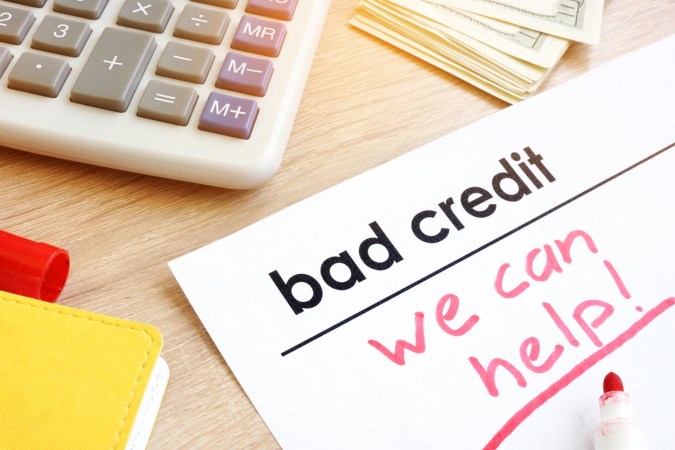We may earn revenue from the products available on this page and participate in affiliate programs. Learn More ›
A business loan can be an important financial tool for business owners. This type of financing provides business owners with additional capital to start, expand, or support their business. Perhaps a baker needs financing for a new commercial oven, an entrepreneur wants to get their new venture off the ground, or a restaurant owners requires funds to establish a second location—a business loan can help provide the funding needed to achieve these goals.
First-time business loan borrowers and experienced business owners alike can benefit from financing. However, applying for a business loan can be an overwhelming process for many business owners due to the borrowing requirements and loan options they may need to wade through. A little guidance can help borrowers navigate the loan process and find the right type of financing to support their business aims. In fact, business owners wondering how to get a business loan may be pleased to know that they can secure the funding they need in just a handful of steps.
Before You Begin…
Before a business owner takes the steps to apply for a business loan, it’s important to keep in mind that a business loan isn’t the best option for every situation. There are several factors to consider before applying for a loan including cost, loan eligibility, and economic conditions. For example, will they be able to afford their loan payments, especially if money is tight already? If not, a loan may not be the best option for the business.
Business loans for start-ups and established businesses aren’t the only financing option for business owners, so it may be worth exploring other sources of funding as well. A line of credit or business credit card could be better alternatives to business loans for some owners. Both a line of credit and a business credit card use revolving credit to help owners cover business expenses without incurring a lump sum of loan debt all at once. With revolving credit, borrowers are approved to access credit or withdraw funds up to a set limit. Those options may be preferable for individuals who want to have additional funds available on an as-needed basis—so they can pay vendors, for instance—rather than a lump-sum payment.
Finally, before applying for financing, entrepreneurs will need to know how to get a business license, as well as what types of business licenses they need to operate legally in their state.
STEP 1: Decide how the loan funds will be used.
When considering the best way to get a business loan, the first step is to determine how that money will be used. Understanding the purpose of the loan can help business owners find the right financing terms for their needs. Additionally, some types of business loans are offered for specific expenditures. For instance, commercial real estate loans are extended to borrowers looking to buy, renovate, or even build property to support a business. Business owners may also find specialized loans to help pay invoices, purchase new equipment, or cover payroll costs in the short term.

Common reasons to get a business loan include:
- Starting a new business;
- Upgrading to new equipment;
- Expanding to a new location or new market;
- Increasing working capital for day-to-day operations; and
- Covering unexpected expenses with an emergency business loan.
STEP 2: Calculate how much you want to borrow.
A big part of learning how to get a small-business loan is figuring out how much money to borrow to fit a particular need or goal. Business owners who borrow too much may end up with a monthly payment they can’t afford. However, borrowing too little could leave a business without the necessary funds to cover expenses or invest in growth.
Business owners can estimate loan needs by considering the use of the loan. For example, a clothing boutique owner may want to move to a larger retail location. To calculate their loan funds, the owner can add up the cost of the new retail space, moving expenses, and lost income from closing for the move.
STEP 3: Determine what type of loan you need to launch or support your business.
From an unsecured business loan for start-up costs to equipment financing for heavy machinery, there are many types of business loans to consider. With the range of financing options available, most business owners can find a loan program that meets their unique needs.

For example, many business owners finance business needs through a Small Business Administration (SBA) loan. SBA loans are offered by private lenders but guaranteed by the federal government. Small-business loans backed by the government provide lenders with financial protection when they extend loans to small businesses. If the borrower defaults on their loan, the SBA will pay the lender a guaranteed amount. The SBA program’s primary business loan, a 7(a) loan, lets qualified businesses borrow up to $5 million from private lenders. In addition, SBA facilitates lending to specialized groups in some cases, such as business loans for women entrepreneurs and business owners.
STEP 4: Consider whether a personal loan could be a good option to fund your business.
If an SBA loan isn’t an option, entrepreneurs may want to look into personal loans to provide funding for their business. A personal loan is a type of unsecured loan (i.e., a loan that isn’t secured by collateral) that can help pay for a variety of expenses, from home improvements to starting a business.
Because personal loans are unsecured, they tend to have higher interest rates than other types of loans. If the borrower defaults on the loan, the lender has no collateral to seize in order to recoup its losses. However, many of the best personal loans can be relatively easy to qualify for—especially for those with good credit scores. A borrower with a credit score of 640 or higher can likely get a personal loan with a more favorable interest rate than a borrower with a credit score below that threshold.
Entrepreneurs who have low business start-up costs can likely get the money they need from a personal loan. However, borrowers with subpar credit scores will want to look elsewhere for financing.
STEP 5: If you own your home, look into whether a home equity loan can help provide business funding.
Homeowners who are starting a business may be able to find financing closer to home—quite literally—by taking out a home equity loan. The best home equity loan lenders (including U.S. Bank and Flagstar Bank) can provide an entrepreneur with the money they need to start up their business.
This type of loan allows homeowners to cash in on the equity they have in their home; that is to say, the amount of their home that they own outright compared with the amount they owe on their mortgage. Home equity loans tend to have lower interest rates than personal loans or other unsecured loans since they use the home as collateral. However, entrepreneurs will want to bear in mind that they could stand to lose their home if they are unable to repay the loan as promised.
STEP 6: Review your qualifications—credit score, collateral, cash flow, and experience—to check your loan eligibility.
Business loan requirements vary by lender and loan type. However, most lenders will set minimum credit score, time in business, and cash-flow requirements for borrowers to qualify for a loan. Lenders typically look at both the business owner’s personal credit score and the business’s credit score. If a business doesn’t have a credit score, the lender may use the owner’s credit score and a personal guarantee. A personal guarantee gives the lender the right to seize personal assets in case of loan default. For example, if a business owner defaults on their loan, the lender might seize their car under the terms of the personal guarantee.
Lenders might also require businesses to put up collateral for a loan. Like a personal guarantee, collateral is a pledge of business assets, such as inventory or equipment, by the business owner. If they default on their loan, the lender can sell off the collateral to help cover the cost of the loan.

STEP 7: Gather any financial information lenders will want to review before they’ll extend a loan.
Most lenders want to see a range of financial and business information in a business loan application. Although the requirements may vary from one lender to another, common required documents include:
- Business plan;
- Business licenses, bylaws, and other operating documents;
- Financial documents such as income statements and balance sheets;
- Personal financial information of the business owner; and
- Personal and business tax returns.
Business owners looking to reduce the amount of required documentation may want to consider no-doc business loans. No-doc loans typically require minimal financial information from the applicant to secure a loan, such as a business bank statement. For borrowers looking for financing options with no credit check, business loans may be available that require minimal financial review, but they are relatively rare. However, no-doc business loans and financing options that don’t require a credit check generally have higher interest rates and shorter repayment terms than other types of loans.
STEP 8: Shop around, compare financing options, and select the right lender for your business.
With a clear plan for loan funds and a desired loan amount, business owners can start shopping around for lenders. There is a wide range of lenders available for small businesses, including traditional banks, microlenders, and online or alternative lenders. Traditional banks tend to offer competitive business loan interest rates and terms, but they may also have more rigid eligibility requirements that borrowers need to meet. On the other hand, online lenders may have more flexible criteria for approving loans, but that financing may come with less desirable terms. For this reason, business owners may want to research the best bank for business loan programs as well as alternative lenders that might meet their needs.
For example, a small-business owner with poor credit may not qualify for a loan through large banks such as Wells Fargo or Chase, and Bank of America business loans may be off the table. Although some business owners may feel that financing is impossible due to their bad credit, business loans may be available from certain online lenders.
According to Chad Cohen, vice president of direct sales at Credibly, a lender specializing in business loans, small businesses may not qualify for a loan at a large bank at all if they are just getting off the ground. “Small-business owners are a tougher segment to fund for larger banking and lending institutions,” he says. “Larger funding institutions are typically looking for larger, more established businesses with stronger business and personal credit profiles, which [is often not the case with] smaller businesses. Finding a trustworthy broker and lender in the fintech space is typically a great option for business [owners who] lack the established profile to walk into their bank and secure funding.”

STEP 9: Write a business loan proposal and submit your application to the lender.
Once a business owner finds a lender and loan product they like, it’s time to apply for financing. Each lender has its own application requirements, so it can be a good idea for business owners to ask lenders for clear instructions on applying for a business loan and what information to include. For instance, borrowers may need to provide their business tax ID number, annual net profit, and the number of employees on staff during the application process.
Most lenders provide small-business loan information online, but they may not accept online applications in all cases. Depending on the lender, the business owner may have to apply in person at a bank branch or submit application materials through the mail. Additionally, many lenders require an interview with the business owner as part of the application process. The loan application interview may take place in person, over the phone, or through an online video call. In some cases, lenders may want to see a fleshed-out business plan, particularly if the purpose of the loan is to launch a new business venture. This document may include market research, customer demographics, business goals, and anticipated timetables for growth and profitability.
STEP 10: Review the terms of the loan agreement—interest rate, repayment period, lender fees, and so on—and check that they are manageable.
After a lender approves a loan application, it’s recommended that the business owner carefully go over the loan agreement. Reviewing the terms of the loan before signing can help business owners avoid unpleasant surprises later. Terms to check on a loan agreement include:
- Loan amount;
- Restrictions on the use of funds, such as using funds only to purchase equipment or real estate;
- Interest rate;
- Repayment period;
- Monthly loan payments;
- Origination or lender fees; and
- Funding speed.
In addition to going over the loan agreement themselves, many business owners have a third party review the agreement. A business lawyer or accountant will generally go over the fine print of a loan agreement and offer advice to the business owner. This also gives the business owner a chance to ask questions about their agreement before committing to the loan.
STEP 11: Receive the funds needed to support your business.
The speed at which a loan is funded varies based on a number of factors, including the type of lender and loan amount. Typically, online lenders offer the fastest funding speeds, with some business owners receiving funds within 24 hours of application approval. However, it’s recommended that a borrower talk with their lender to better understand the funding timeline.

While waiting for loan funding, a business owner may want to look at business insurance coverage. The cost of business insurance is often affordable and gives the business owner additional financial protection to continue paying back their loan if a covered peril affects the business. For instance, business income insurance (sometimes called business interruption insurance) could help a restaurant owner replace lost income if their restaurant were damaged in a fire and needed to be closed for an extended period of time for repairs. The best small-business insurance companies such as NEXT Insurance and Thimble may be able to help business owners find the right amount of coverage to protect them from losses that could otherwise threaten their business if operations are interrupted during the loan term.
Cohen offers a few final reminders for business owners to consider as they weigh their financing options and apply for a business loan. “There are three points that I would recommend,” he says. “First, please remember that personal and business profile matters in terms of the options that you have access to. Always working to improve your payment history and debt situation can greatly assist you through the application process. Second, be prepared from a documentation perspective. It is best to have bank statements, ownership documentation, tax returns, and other financial documents available for a quick and efficient funding process. Third—and I do not want to understate—find a lender and broker that you trust. [Sales], like every other profession, has both strong and subpar actors. Finding someone to be honest with you is the best way to [get the right policy] for every business profile.”
Following these steps can help business owners get a loan for a new business or secure additional funds for an existing business. Prospective borrowers may want to create a funding plan before submitting a business loan application. Developing a plan to utilize loan funds and repay the loan can help business owners maximize the benefits and avoid incurring additional costs from accumulated loan interest.

















